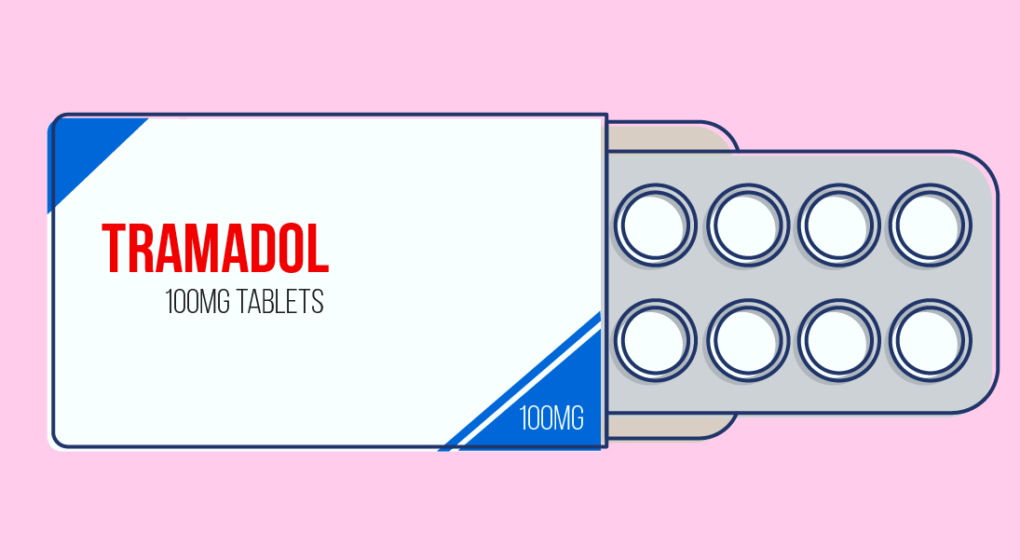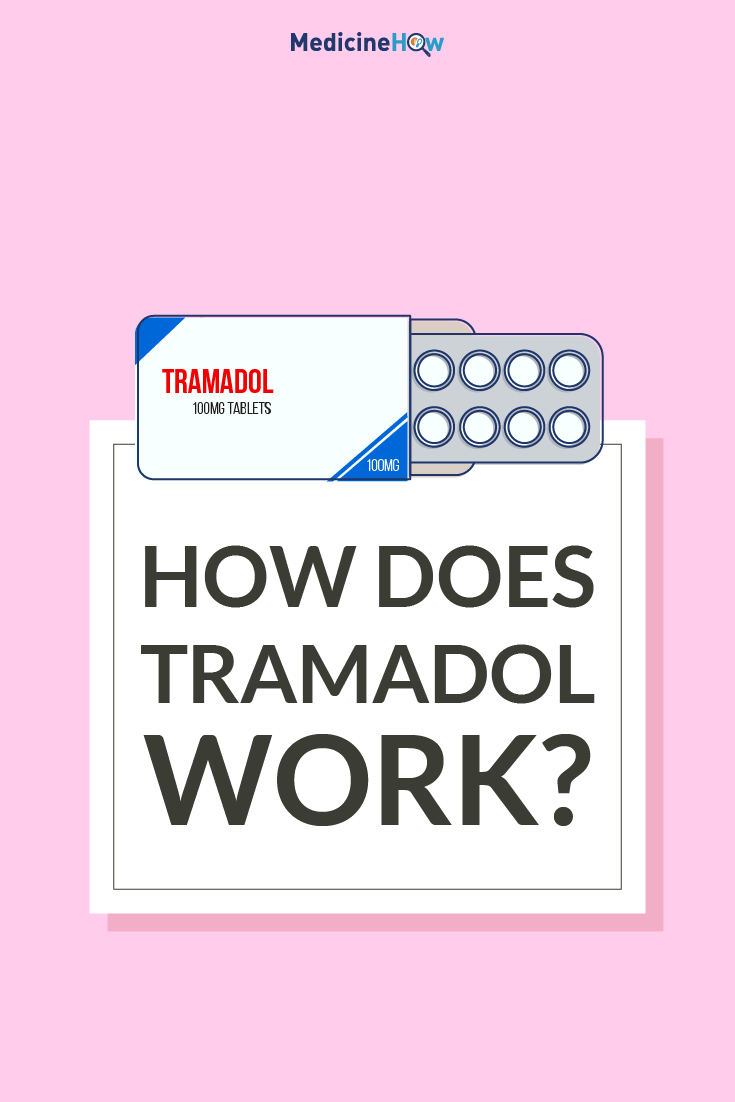
Tramadol is a type of drug called an opioid that is used to relieve moderate to severe pain. It works by activating mu opioid receptors that naturally exist in your body, which causes a number of effects, including to provide analgesia and relieve pain. It also blocks the reuptake of some neurotransmitters called noradrenaline and serotonin.
Tramadol is a relatively strong opioid and is usually used for moderate to severe pain. It can be taken for short-term acute pain, or on an ongoing basis for chronic pain.
Brand Names and Doses
Tramadol is the generic name, or the name of the actual drug component inside the medication. There are many different brand names, depending on which company has manufactured the drug.
Brand names of tramadol oral capsules (50mg dose) include:
- Lodam
- Tramal
- Zydol
- Tramedo
There are also controlled release oral tablets, which slowly release the medication over a longer time. This is ideal for chronic pain to provide continuous pain relief.
Brand names of 12-hour controlled release tablets include:
- Tramal SR (50mg, 100mg, 150mg, 200mg doses)
- Lodam SR (100mg, 150mg, 200mg doses)
- Tramadol SR (100mg, 150mg, 200mg doses)
- Tramedo SR (100mg, 150mg, 200mg doses)
- Zydol SR (150mg, 200mg doses)
Brand names of 24-hour controlled release tablets include:
- Durotram XR (100mg, 200mg or 300mg doses)
It is important to swallow the controlled release tablets whole, as breaking or chewing them called interfere with the way they release the drug into your body.
Tramal Oral Drops are a liquid formulation of tramadol and contains 100mg/mL. There is also an injection of tramadol, under the the brand name of Tramahexal or Tramal.
What type of drug is it?
Tramadol is a type of drug called an opioid. This is a drug class that helps us to group drugs that work in a similar way together. Other opioid medications include:
- Buprenorphine
- Codeine
- Dextropropoxyphene (Propoxyphene)
- Fentanyl
- Hydromorphone
- Methadone
- Morphine
- Oxycodone
- Pethidine
What is Tramadol used for?
Tramadol is usually in the relief of moderate to severe pain. It is a relatively strong opioid. With the standard release capsules, the pain relief kicks in about 1 hour after taking the dose, and reaches a peak 1-3 hours later.
For milder pain, it is usually best to use a weaker opioid, such as codeine, because there is a lower risk of side effects.
Tramadol can also be used for people with neuropathic pain, which is pain that occurs due to abnormalities of the central nervous system.
How does Tramadol work?
Everyone naturally has endogenous opioids inside their body, which can bind to special receptors, called opioid receptors, to activate several effects in the body. When an endogenous opioid attaches to the right receptor, it can lead to several effects in the body including:
- Analgesia to relieve pain
- Slowing down of breathing
- Tiredness
- Difficulty defecating
Tramadol manipulates this natural process by activating the same receptors that the endogenous opioids do, in particular the mu opioid receptors. It mimics the effect of natural opioids in your body to provide pain relief.
Tramadol can also decrease the transmission of pain impulses in the body by interrupting the pain messages in the spinal cord and interfering with the messages coming from the brain in the central nervous system (CNS). It inhibits the reuptake of noradrenaline and serotonin so to relieve pain.
Metabolites of Tramadol
Some of the tramadol dose is converted into a substance called O-desmethyltramadol in the liver of your body. This is called a metabolite and O-desmethyltramadol has an effect similar to the original drug to increase the pain relieving effects (and sides effects).
The exact amount of amount of O-desmethyltramadol produced from the original dose changes from each person according to your genetic makeup. There is a certain enzyme in the liver that is involved in converting codeine to morphine - called CYP2D6 - and everyone has a different amount of this enzyme.
In fact, up to 10% of caucasians lack the enzyme altogether so they are not able to metabolize the drug in this way, so they may have a reduce analgesia effect. For this reason, the efficacy of tramadol can vary between each person.
Side Effects
There are several general side effects of opioid medications such as tramadol that can affect some people, such as drowsiness, dizziness, headache, dry mouth and urinating less often.
You can find out more information about some of the specific side effects by clicking on them below.
Nausea
Constipation
Respiratory Depression
Dependence
Cautions
There are some people who may need special attention if they take tramadol due to other medications or health conditions they have. For example, if you have the following conditions often you may need a lower dose than usual:
- Slow heart rate
- Endocrine disease
- Hypothyroidism
- Adrenocortical insufficiency
- Myasthenia gravis
- Central nervos system (CNS) depression
- Frequent use of alcohol
Additionally, people with epilepsy are more likely to have a seizure while taking oxycodone, so this should be considered.
Interactions
Taking tramadol at the same time as another drug can sometimes change their effect on your body because of the way they interact. Some of these interactions include:
- Carbemazepine: may need to increase the dose of tramadol because it is less effective when used together.
- Moclobemide: not usually used together because these is a risk of changes to blood pressure and the central nervous system.
- Ondansetron: not usually used together because a higher dose of tramadol is needed and side effects are more likely.
- Pethidine: not usually used together as their is a risk of seretonin toxicity.
- Warfarin: may need to reduce the dose because tramadol may increase the effect of warfarin and the risk of side effects such as bleeding.
Some drugs that are used in the treatment of depression called selective seretonin reuptake inhibitors (SSRIs) can cause a condition called seretonin toxicity. The risk of this is higher if tramadol is taken at the same time, so you need to be on the lookout for early signs. This can also occur with MAO inhibitor drugs, such as phenylzine and tranylcypromine, which should not be used with tramadol.
Any medication that blocks the action of opioids, such as buprenorphine, naloxone or naltrexone, can decrease the action of tramadol. These drugs are not usually used together.
All drugs that cause your breathing to slow down can increase the risk of a serious side effect of tramadol: respiratory depression. Many drugs to lower blood pressure, such as beta blockers, can have this effect. This combination can be used, but it's important that your doctor knows that you are taking tramadol and checks that the dose is right for your body.
Pregnancy and Breastfeeding
Tramadol is not usually recommended for women who are pregnant for two main reasons.
- There is an increased risk of respiratory depression in the baby, which can be fatal.
- The baby may experience withdrawal symptoms after birth due to the sudden decrease in dose of oxycodone when they are no longer connected to the mother's bloodstream.
Instead, it is best for pregnant women to take other medications ato relieve pain while they are pregnant, such as paracetamol. For more severe pain, a weaker opioid drug such as codeine is sometimes used.
For women who are breastfeeding, occasional doses of tramadol may be used. There may still be some risk to your baby if they are used everyday for an extended period of time, so it is best to keep the treatment time short, if possible.
Pin it!


